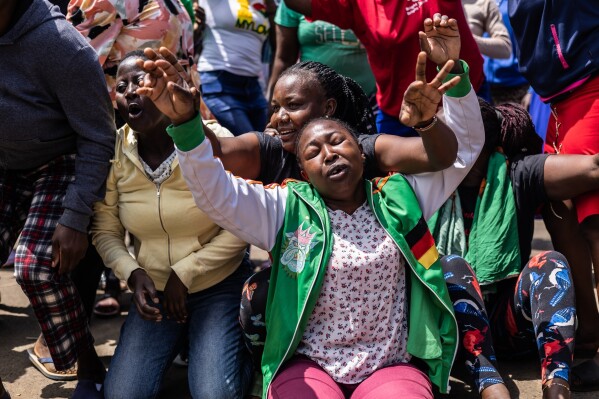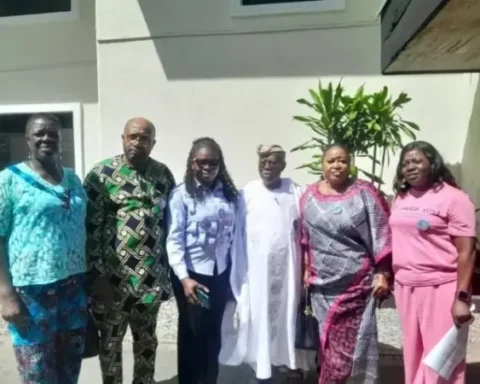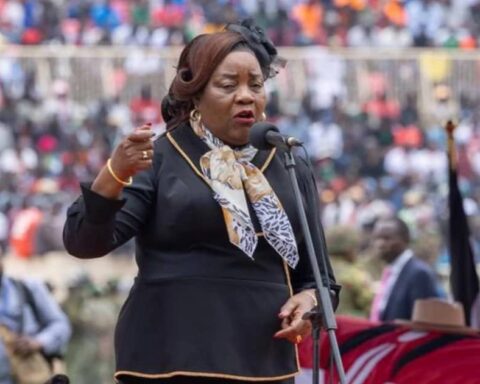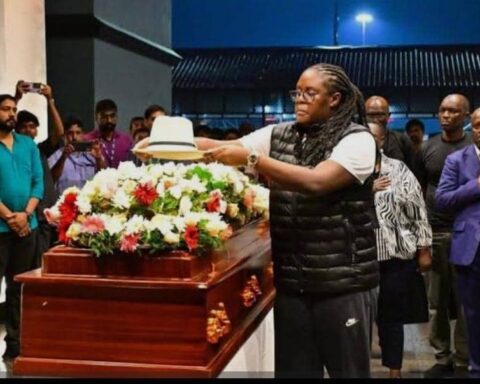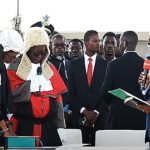Raila Odinga’s death has brought to the fore the colourful extravagance of a Luo mourning; the loud wailing, the theatrics, the fanaticism, the helplessness and the public displays of unrestrained emotions.
As soon as it was officially confirmed that the former Prime Minister Raila Odinga had breathed his last, the Luo world descended into a cathartic spell of mourning as they frantically and feverishly hit the streets, stormed the markets, raided villages and flooded into homesteads in loud wails, prolonged cries, deafening screams and emotionally-charged lamentations.
All hell broke loose as thousands of mourners, from Siaya to Homa Bay, Kisumu to Migori, abandoned their everyday activities and wore the full armour of grief – the ultimately Luo way.
To the Luo community, Raila Odinga was a man of godly stature. This highly eminent figure they called Agwambo, meaning the unpredictable one, not only held together the fabric of the Luo nation but also inspired collective pride and a sense of dignified belonging in the famously evocative Lakeside people.
To the Luo community, Raila Odinga was a man of godly stature. This highly eminent figure they called Agwambo, meaning the unpredictable one, not only held together the fabric of the Luo nation but also inspired collective pride and a sense of dignified belonging in the famously evocative Lakeside people.
Drenched in grief, they all came together to bid farewell to a titan, a bastion of hope and a political sage who chaperoned a nation’s democratic journey and who, ultimately, wound up as the most culturally and politically significant figure in the entirety of Kenyan politics.
Raila Odinga was their man, their father and their northern star. His mourning, therefore, had to not only be as showy as possible but also peppered with all the colourfulness, culture, significance and circumstance of a man who would become a community’s avatar.
On the streets, they poured in their roaring thousands. Armed with fresh twigs, whistles and other dramatic paraphernalia, the Luo community wailed to the gods, lashed out, begged the spirits and sprawled themselves across the tarmac, helplessly looking unto the heavens, their hands outstretched, eyes bawling out, and their grief immeasurable.
This was just the beginning of the Luo way of mourning, and just a tiny fraction of the drama, flair and panache that would characterise a wounded Luo soul, a brokenhearted Luo griever.
Back at Kang’o ka Jaramogi, Raila Odinga’s rural home in Bondo, more mourners gathered in their flashiest costumes, extravagant finesse and excessive displays as they brought along painted bulls, garlanded motorbikes, mystical accessories and eye-catching cosmetics to honour the man they affectionately called Baba, Jakom, and Tinga.
Some strutted around shirtless, others stuck feathers to their heads, some rolled on the ground, and others violently banged pots and objects in an ostentatious display of raw emotion and shameless misery.
At one corner, old men performed the “Tero Buru” loosely translated to “Sending away the dust”, one of the most dramatic and symbolically rich rituals in the Luo mourning tradition.
Performed to ward off the malevolent spirit believed to cause death, it was also believed to restore spiritual harmony to the homestead.
At the death of an elder, as of that of Raila, the village would erupt in a thunderous tremor of hooves and dust as locals, adorned in sisal skirts, animal hides and tyre sandals, drove bulls around the homestead, raising choking clouds of dust and turning the homestead into a deafening cry of roars and blood-curdling chants.
As a procession of mourners, accompanied by loud horns and drums, escorted bulls to rivers and lakes, the deceased’s eldest son would wear his father’s headgear, Ogut Dol, and wield his spear, Tong Dindo, stepping into the patriarch’s role in a sacred rite of succession.
That was the Luo way of saying goodbye to a respected soul – and it never was supposed to be calm, or composed or even remotely – and offendingly – civil.
On X, a little debate emerged on the conduct of mourners and if they should conduct themselves with a little restraint and less drama – the answer, emphatically, and unapologetically, was a resounding no.
“Cultural tolerance is very important. I believe the Luo community has every right to mourn Raila in the way they know best,” someone wrote on X.
“Luos wail and cry. They express emotion and grief openly. They stay with the bereaved family for days after the burial. If you ask me, sometimes it’s overdone and turns chaotic, but again, that’s how they roll.”
Pius Otieno also chimed in, saying, “How do you expect a Luo to mourn like the people who do not know their fathers, people who do not value patriarchy, people whose society has been feminised and conditioned to demonise men? Let people mourn how they want. How they should. It’s their identity. Jowi!”
Kamau Mbothu, on his part, said: “Something about Luo culture that I love, is when someone dies, the world quite literally stops and you cannot move on like nothing happened. The loud wailing, crying and mourning for days is supposed to help everyone grieve properly and celebrate too. It heals the spirit.”
Luoland’s greatest son is gone. His spirit has departed. The Luo nation will ensure that there will be enough noise, enough drama, enough recitals and more than enough spectacle to not just bid goodbye to the fallen giant but also heal the shattered souls of the living.
– Citizen Digital, Kenya
